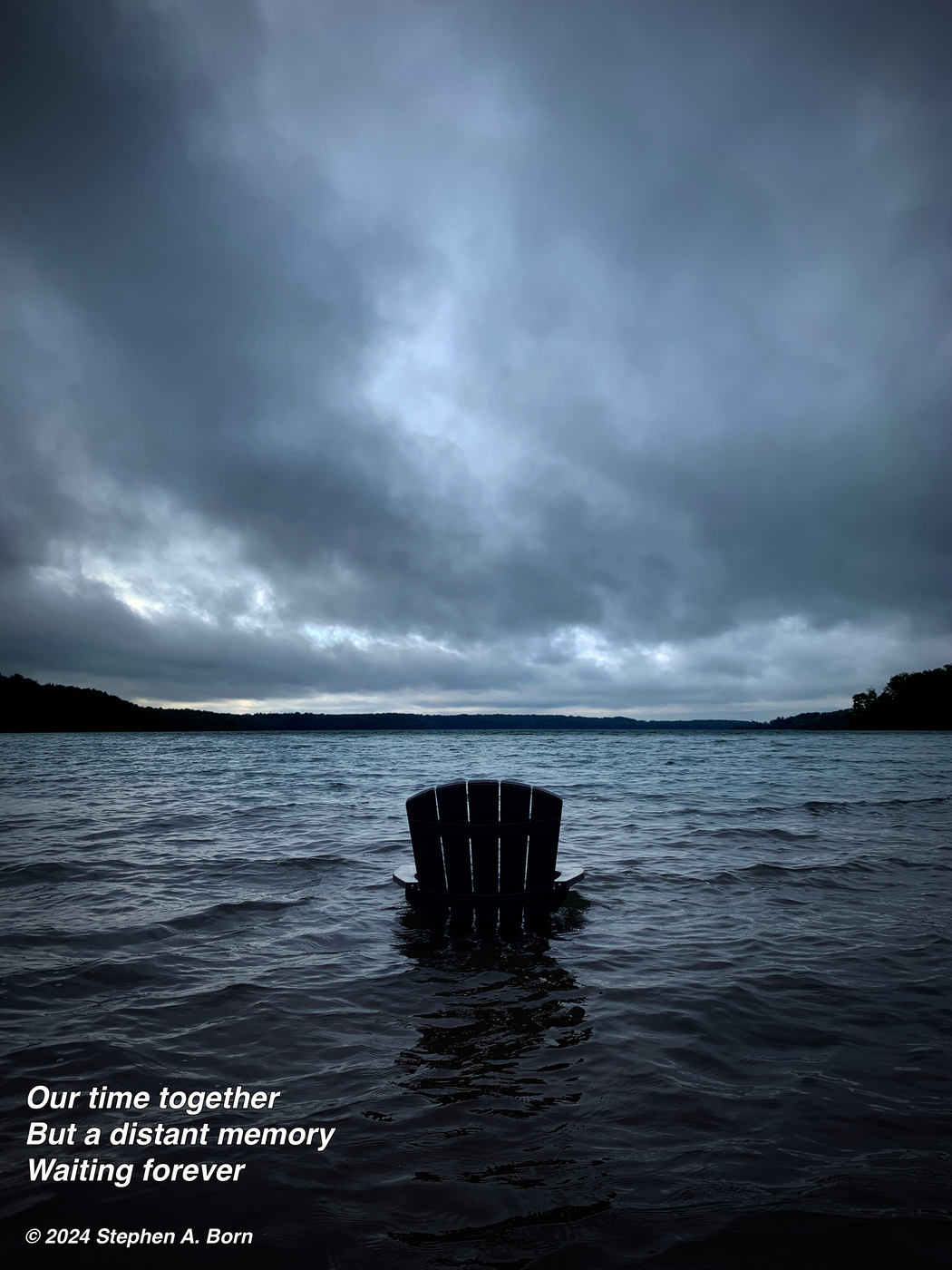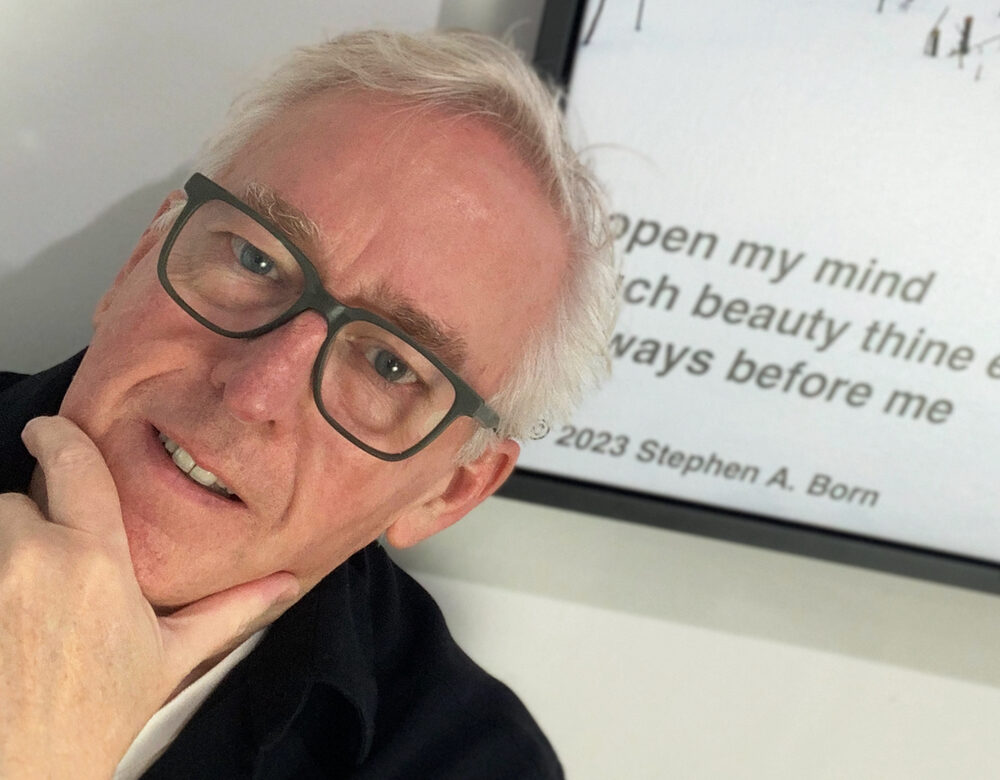Stephen A. Born
Where do you live: Minneapolis, Minnesota, USA.
Your education: Certification for commercial photography, associate’s degree in healthcare.
Describe your art in three words: Poetic, Photographic, Psychotomimetic.
Your discipline: Photography of the urban and natural environment fused with the art of the written word.
Website | Instagram
Can you tell us about your first creative exploration with photography and how it shaped your approach to art today?
My first photographic experience was with my grandfather’s Argus 35mm camera, which I used to take pictures of my toy soldiers in elaborate battle scenes I created in my parents’ backyard. After three decades as a professional photographer and now retired, I am rediscovering my passion for personal photography projects. A nearby urban lake and surrounding park could be considered my backyard, as I visit this location almost daily. Like the imagery I created as a child, I am now exploring my immediate environment, intending to discover the “extraordinary in the everyday ordinary.”
Your project, “A Tale of Two Lakes,” has a deep connection to nature and the environment. What inspired you to focus on these two lakes, and how did the COVID-19 pandemic influence this decision?
During the COVID-19 pandemic, I needed to get out of the house and get some fresh air and exercise. I would often go walking around Lake Harriet, which is about 1.5 miles from my home. With repetition, I began to notice details I had not seen previously. I wondered if other people were experiencing the same phenomenon. I decided to take photographs during my walks and share them online with my neighbors as a distraction during the pandemic and to reconnect with my community. To give the photos a more personal vibe, I started writing Haiku poems and invited viewers to respond to the images, Haiku, or even contribute a Haiku poem of their own creation. The response has been fantastic. This was the birth of the “Lake Harriet Haiku Project.” Living in Minnesota, “The Land of 10,000 Lakes” and more specifically, Minneapolis, “The City of Lakes,” it quickly becomes apparent that water is part of our DNA. To broaden the scope of my project and include more Minnesota residents, I decided to create a similar situation with a lake in northern Minnesota that my family visited often when I was a child. I then decided to combine these two projects into one and call it “A Tale of Two Lakes.” Although the photos were created in Minnesota, many have a universal appeal, and it would be difficult to place their point of origin. The metaphorical nature of the Haiku poems also gives the images a more universal appeal.
 Stephen Born | I open my mind | 2023
Stephen Born | I open my mind | 2023
How do you blend your background in professional advertising photography with your current artistic practice of combining photography with Haiku poetry?
I love learning and exploring. I have dabbled in sculpture, welding, neon, furniture making, creative writing, and more. I also like blending several skills to develop a new form of expression. Photography’s visual form of storytelling (whether for advertising or fine art) is a natural fit with the literary form of storytelling. I chose Haiku for its simple structure and accessibility for beginners such as myself.
How does the process of creating Haiku poems to accompany your photos enhance the overall narrative of your images?
Adding Haiku poems to my visual creations gives the viewer a peek into my soul. Many art patrons want to make a personal connection with the artists they discover. The story behind the image creation can be as fascinating as the image itself.
What is the most significant insight you’ve gained from engaging your community through “The Lake Harriet Haiku Project” and inviting their creative contributions?
Damn, I love these questions! How late did you stay up thinking of these mind benders? The most significant insight I have gained is how something as simple as a photograph and a poem can deeply affect so many people’s lives in such a profound manner. Frequently, I receive comments telling me how much people look forward to Friday mornings when I post my images/Haiku. They love the beauty of the photos and the intellectual challenge of writing their Haiku poems in response and posting them online. Others express the thrill of rediscovering their neighborhood and seeing the “extraordinary in the everyday ordinary.”
 Stephen Born | Our Time Together | 2024
Stephen Born | Our Time Together | 2024
How do you see the relationship between urban and rural environments reflected in your photographs, and what do you want viewers to take away from this comparison?
If you are not a Minneapolis or Northern Minnesota resident, you might be hard pressed to distinguish where each photo was created. Many of these photos could have been created in many parts of the United States, Europe, or other international locations. That was one of my goals with this project. Often, the line between urban and rural, southern and northern, American and Europe, or Asia, is not very distinct. Regardless of location, we need to be aware of our surroundings, take notice of their unique qualities, and celebrate them.
Your work often focuses on everyday scenes, capturing the extraordinary within the ordinary. What advice would you give to other artists looking to find beauty in the mundane?
The advice I would give to artists or non-artists searching for beauty in the mundane would be the same. If you have a favorite location you visit frequently, go there at different times of the day, week, or month. If it is safe, go there in the middle of the night. Go there with a friend and listen to how they react to that environment. If you start in the same spot, try a different starting point. If you wear hiking shoes, try different footwear. If you go there to walk and exercise, bring some food to eat while watching the environment change over several hours. Bring a book to read. Bring a blank notebook to write your thoughts. Bring your paints or camera. If you are a visual artist, give yourself some assignments, such as picking out the most mundane thing, such as a drinking fountain or a park bench, and see if you can create something extraordinary!


Leave a Reply